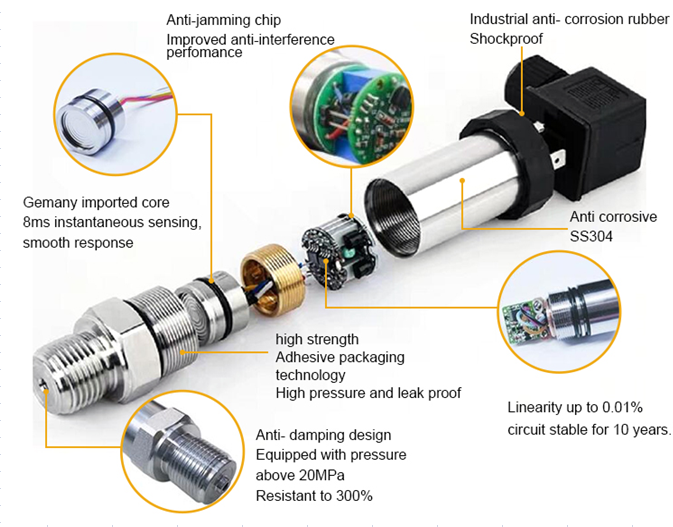 Check the size of the mounting hole: If the size of the mounting hole is not appropriate, the threaded part of the sensor will be easily worn out during the installation process. This will not only affect the sealing performance of the equipment, but also make the pressure sensor not fully functional, and may even cause safety hazards. Only suitable mounting holes can avoid thread wear, and mounting holes can usually be tested with a mounting hole measuring instrument to make appropriate adjustments.
Check the size of the mounting hole: If the size of the mounting hole is not appropriate, the threaded part of the sensor will be easily worn out during the installation process. This will not only affect the sealing performance of the equipment, but also make the pressure sensor not fully functional, and may even cause safety hazards. Only suitable mounting holes can avoid thread wear, and mounting holes can usually be tested with a mounting hole measuring instrument to make appropriate adjustments.- Keep the installation holes clean: It is very important to keep the installation holes clean and prevent the melt from clogging to ensure the normal operation of the equipment. Before the machine is cleaned, all pressure sensors should be removed from the barrel to avoid damage. When the sensor is removed, the molten material may flow into the mounting hole and harden. If the residual molten material is not removed, the top of the sensor may be damaged when the sensor is installed again. The cleaning kit can remove these melt residues. However, repeated cleaning may deepen the damage of the mounting hole to the sensor. If this happens, measures should be taken to raise the position of the sensor in the mounting hole.
- Choose an appropriate location: When the pressure sensor is installed too close to the upstream of the production line, unmelted materials may wear the top of the sensor; if the sensor is installed too far behind, it may be between the sensor and the screw stroke A stagnant zone of molten material will be produced, where the molten material may be degraded, and the pressure signal may also be distorted; if the sensor is too deep into the barrel, the screw may touch the top of the sensor during rotation and cause its damage. Generally speaking, the sensor can be located on the barrel in front of the filter, before and after the melt pump, or in the mold.
4. Carefully clean; before using a wire brush or special compound to clean the extruder barrel, all sensors should be disassembled. Because these two cleaning methods may cause damage to the diaphragm of the sensor. When the barrel is heated, the sensor should also be removed and a soft cloth that will not wear out should be used to wipe its top. At the same time, the hole of the sensor should also be cleaned with a clean drill and guide sleeve.
5. Keep dry: Although the circuit design of the sensor can withstand the harsh extrusion processing environment, most sensors are not absolutely waterproof, and it is not conducive to normal operation in a humid environment. Therefore, it is necessary to ensure that the water in the water cooling device of the extruder barrel does not leak, otherwise it will adversely affect the sensor. If the sensor has to be exposed to water or a humid environment, it is necessary to choose a special sensor with extremely strong water resistance.
6. Avoid low temperature interference: In the extrusion production process, for plastic raw materials, there should be sufficient “soaking time” from solid to molten state. If the extruder has not reached operating temperature before starting production, both the sensor and the extruder will be damaged to a certain degree. In addition, if the sensor is removed from the cold extruder, the material may stick to the top of the sensor and cause damage to the diaphragm. Therefore, before removing the sensor, make sure that the temperature of the barrel is high enough and the material inside the barrel is in a softened state.
7. Prevent pressure overload: Even if the overload design of the pressure sensor’s pressure measurement range can reach 50% (the ratio exceeding the maximum range), risk should be avoided as much as possible from the perspective of equipment operation safety, and it is best to choose the measured pressure in the range range Within the sensor. Under normal circumstances, the best range of the selected sensor should be 2 times the measured pressure, so that even if the extruder is operated under extremely high pressure, the pressure sensor can be prevented from being damaged.
The pressure transmitter is required to be inspected once a week and once a month. The main purpose is to remove the dust in the instrument, carefully check the electrical components, and check the output current value frequently. Separate from the outside by strong electricity.
Post time: Jan-10-2022
